Category Archives: Data Science
Linear Discriminant Analysis (LDA) Concepts & Examples
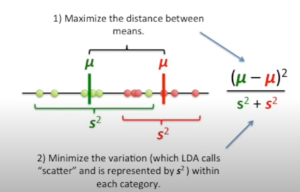
You may have heard of Linear Discriminant Analysis (LDA), but you’re not sure what it is or how it works. In the world of machine learning, Linear Discriminant Analysis (LDA) is a powerful algorithm that can be used to determine the best separation between two or more classes. With LDA, you can quickly and easily identify which class a particular data point belongs to. This makes LDA a key tool for solving classification problems. In this blog post, we will discuss the key concepts behind LDA and provide some examples of how it can be used in the real world! What is Linear Discriminant Analysis (LDA) and what are its …
100 Interview Questions for Deep Learning

If you’re looking for a job in deep learning, you’ll need to be prepared to answer some tough questions. In order to help you get started, we’ve put together a list of 100 interview questions for deep learning. While many of these questions are related to deep learning concepts, we have also listed several frameworks (Tensorflow, Pytorch, etc) related questions. By being prepared for these questions, you’ll be able to demonstrate your knowledge and expertise in this area, and increase your chances of landing the job! What is deep learning? How does machine learning differ from deep learning? What are the differences between shallow and deep learning? How does deep …
Building Data Analytics Organization: Operating Models
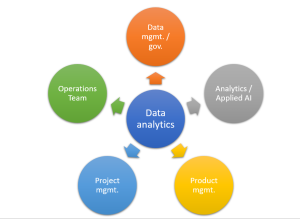
Most businesses these days are collecting and analyzing data to help them make better decisions. However, in order to do this effectively, they need to build a data analytics organization. This involves hiring the right people with the right skills, setting up the right infrastructure and creating the right processes. In this article, we’ll take a closer look at what it takes to set up a successful data analytics organization. We’ll start by discussing the importance of having the right team in place. Then we’ll look at some of the key infrastructure components that need to be put in place. Finally, we’ll discuss some of the key process considerations that …
Who is a Data Scientist? Test your Knowledge

Do you know what a data scientist is? You may think you do, but take this quiz to find out for sure! Data scientists are essential to modern business and it’s important to know who they are and what they do. This quiz is just for fun, but it’s also a great opportunity to learn more about one of the most in-demand professions today. So put your data scientist knowledge to the test and see how well you really know this profession! And, feel free to share your thoughts if you disagree with the answer of any of the questions. Here are a few related posts on this topic: What …
Interns – Machine Learning Interview Questions & Answers: Set 1

This page lists down first set of machine learning / data science interview questions and answers for interns / freshers / beginners. If you are an intern or a fresher or a beginner in machine learning field, and, you are looking for some practice tests before appearing for your upcoming machine learning interview, these practice tests would prove to be very useful and handy. Machine Learning topics covered in Test In this set, some of the following topics have been covered: Machine learning fundamentals (Supervised and unsupervised learning algorithms) Different types of machine learning problems and related algorithms with examples Concepts related with regression, classification and clustering Practice Test (Questions …
Data-centric vs Model-centric AI: Concepts, Examples
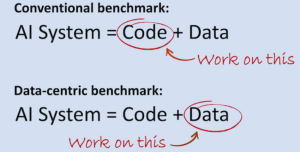
There is a lot of discussion around AI and which approach is better: model-centric or data-centric. In this blog post, we will explore both approaches and give examples of each. We will also discuss the benefits and drawbacks of each approach. By the end of this post, you will have a better understanding of both AI approaches and be able to decide which one is right for your business! As product managers and data science architects, you should be knowledgeable about both of these AI approaches so that you can make informed decisions about the products and services you build. Model-centric approach to AI Model-centric approach to AI is about …
Data Science Architect Interview Questions

In this post, you will learn about interview questions that can be asked if you are going for a data scientist architect job. Data science architect needs to have knowledge in both data science/machine learning and cloud architecture. In addition, it also helps if the person is hands-on with programming languages such as Python & R. Without further ado, let’s get into some of the common questions right away. I will add further questions in the time to come. Q1. How do you go about architecting a data science or machine learning solution for any business problem? Solving a business problem using data science or machine learning based solution can …
Gartner Data Analytics Trends for 2022
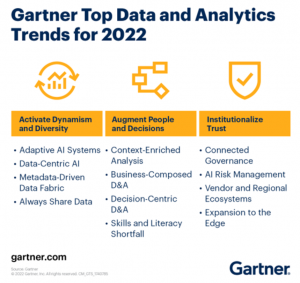
Every year, Gartner releases a report on the latest data analytics trends that will be influential for businesses in the coming year. These reports are always insightful, and provide valuable information for companies who want to stay ahead of the curve. This year is no exception, and Gartner released their predictions for data analytics trends in earlier in 2022. In this blog post, we will take a look at some of the most important trends that Gartner has identified. Although it is a bit late to publish this post. However, this post discusses the concepts in detail and will be updated from time-to-time. Stay tuned for more insights into the …
Decision Science & Data Science – Differences, Examples
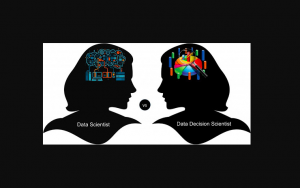
Decision science and Data Science are two data-driven fields that have grown in prominence over the past few years. Data scientists use data to arrive at the truth by coming up with conclusions or predictions about things like customer behavior and assess suitability of those conclusions / predictions, while decision scientists combine data with other information sources to make decisions and assess suitability of those decisions for enterprise-wide adoption. The difference between data science and decision science is important for business owners to understand in clear manner in order to leverage the best of both worlds to achieve desired business outcomes. In this post, you will learn about the concepts …
Sklearn SimpleImputer Example – Impute Missing Data
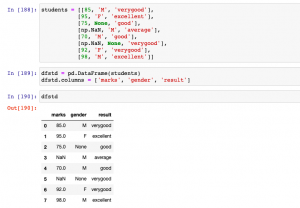
In this post, you will learn about how to use Python’s Sklearn SimpleImputer for imputing / replacing numerical & categorical missing data using different strategies. In one of the related article posted sometime back, the usage of fillna method of Pandas DataFrame is discussed. Handling missing values is key part of data preprocessing and hence, it is of utmost importance for data scientists / machine learning Engineers to learn different techniques in relation imputing / replacing numerical or categorical missing values with appropriate value based on appropriate strategies. SimpleImputer Python Code Example SimpleImputer is a class in the sklearn.impute module that can be used to replace missing values in a dataset, using a …
Pandas dropna: Drop Rows & Columns with Missing Values
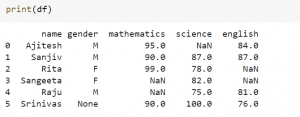
In this blog post, we will be discussing Pandas’ dropna method. This method is used for dropping rows and columns that have missing values. Pandas is a powerful data analysis library for Python, and the dropna function is one of its most useful features. As data scientists, it is important to be able to handle missing data, and Pandas’ dropna function makes this easy. Pandas dropna Method Pandas’ dropna function allows us to drop rows or columns with missing values in our dataframe. Find the documentation of Pandas dropna method on this page: pandas.DataFrame.dropna. The dropna method looks like the following: DataFrame.dropna(axis=0, how=’any’, thresh=None, subset=None, inplace=False) Given the above method and parameters, the following …
Spend Analytics Use Cases: AI & Data Science
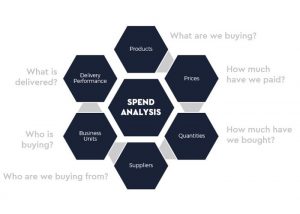
In this post, you will learn about the high-level concepts of spend analytics in relation to procurement and how data science / machine learning & AI can be used to extract actionable insights as part of spend analytics. This will be useful for procurement professionals such as category managers, sourcing managers, and procurement analytics stakeholders looking to understand the concepts of spend analytics and how they can drive decisions based on spend analytics. What is Spend Analytics? Simply speaking, spend analytics is about performing systematic computational analysis to extract actionable insights from spend and savings data across different categories of spends in order to achieve desired business outcomes such as cost savings, …
Perceptron Explained using Python Example
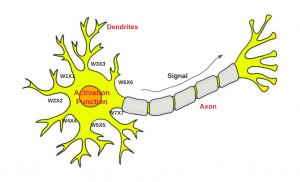
In this post, you will learn about the concepts of Perceptron with the help of Python example. It is very important for data scientists to understand the concepts related to Perceptron as a good understanding lays the foundation of learning advanced concepts of neural networks including deep neural networks (deep learning). What is Perceptron? Perceptron is a machine learning algorithm which mimics how a neuron in the brain works. It is also called as single layer neural network consisting of a single neuron. The output of this neural network is decided based on the outcome of just one activation function associated with the single neuron. In perceptron, the forward propagation of information happens. Deep …
Linear vs Non-linear Data: How to Know
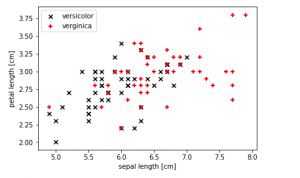
In this post, you will learn the techniques in relation to knowing whether the given data set is linear or non-linear. Based on the type of machine learning problems (such as classification or regression) you are trying to solve, you could apply different techniques to determine whether the given data set is linear or non-linear. For a data scientist, it is very important to know whether the data is linear or not as it helps to choose appropriate algorithms to train a high-performance model. You will learn techniques such as the following for determining whether the data is linear or non-linear: Use scatter plot when dealing with classification problems Use …
Insurance Machine Learning Use Cases

As insurance companies face increasing competition and ever-changing customer demands, they are turning to machine learning for help. Machine learning / AI can be used in a variety of ways to improve insurance operations, from developing new products and services to improving customer experience. It would be helpful for product manager and data science architects to get a good understanding around some of the use cases which can be addressed / automated using machine learning / AI based solutions. In this blog post, we will explore some of the most common insurance machine learning / AI use cases. Stay tuned for future posts that will dive into each of these …
Invoice Processing Machine Learning Use Cases

Invoice processing is a critical part of any business. It’s the process of creating, managing, and paying invoices. Without invoice processing, businesses would have a difficult time keeping track of their finances. There are many different invoice processing use cases. For example, businesses can use invoice processing to keep track of customer payments, manage vendor contracts, and streamline their accounting processes. Invoice processing can also be used to detect fraud and prevent errors. Machine learning / AI can be used to improve invoice processing in a number of ways. As a product manager, it will be helpful to understand these use cases and how machine learning can be used to …
I found it very helpful. However the differences are not too understandable for me